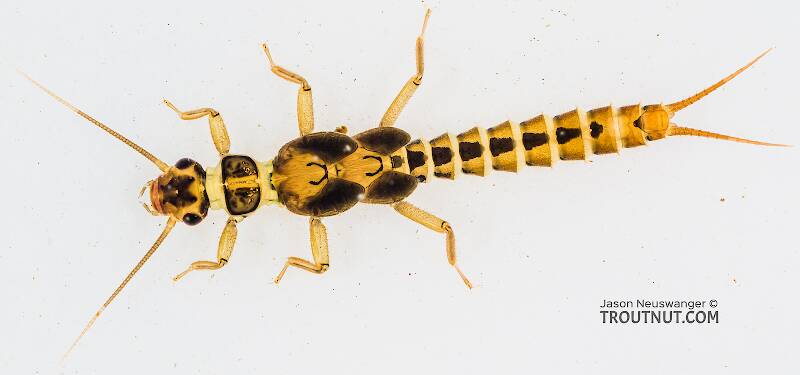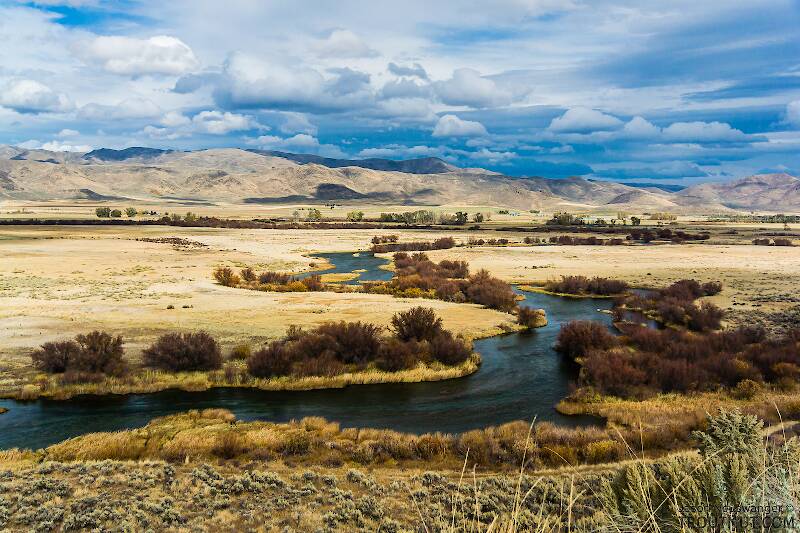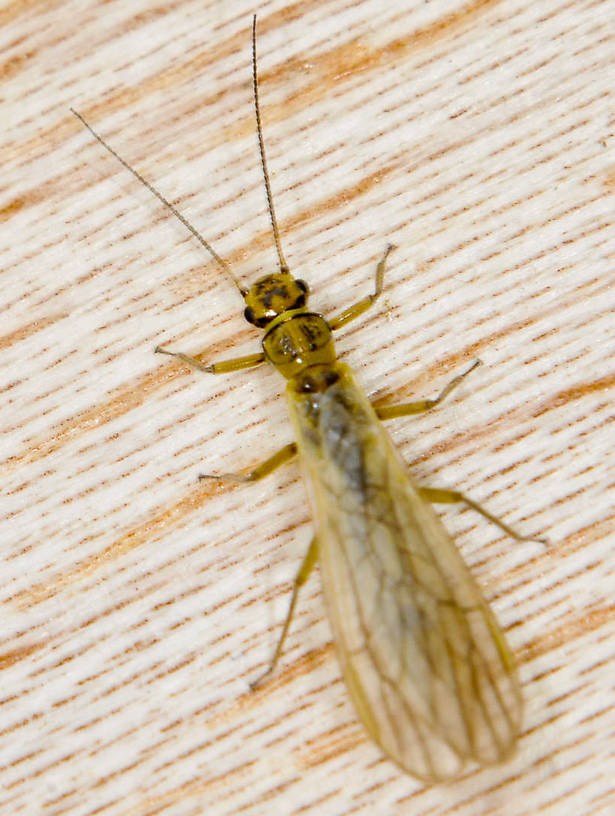
Salmonflies
Pteronarcys californica
The giant Salmonflies of the Western mountains are legendary for their proclivity to elicit consistent dry-fly action and ferocious strikes.


Stonefly Species Sweltsa borealis (Boreal Sallflies)
Species Range
Physical description
Most physical descriptions on Troutnut are direct or slightly edited quotes from the original scientific sources describing or updating the species, although there may be errors in copying them to this website. Such descriptions aren't always definitive, because species often turn out to be more variable than the original describers observed. In some cases, only a single specimen was described! However, they are useful starting points.
Adult
14 mm. Yellowish.
Head a little broader than the prothorax, pale yellow, with a dark V-shaped mark connecting the ocelli, two dark spots in front, and a small reddish tubercle each side; palpi blackish, antennae fuscous, yellowish at base.
Prothorax short, twice as wide as long, a little broader in front than behind, the angles broadly rounded; pale yellow, the elevated margin blackish, each side a little ruguose and brownish; rest of thorax and the abdomen brown.
Legs brownish yellow, a transverse black line at ends of femora; setae; short, yellowish in middle, brownish at ends.
Wings greenish yellow, veins of anterior pair, except subcosta and radius, brownish (in one wing there are two crossveins (note from Troutnut: original source calls crossveins "transversals") beyond subcosta, but one is bent and appears abnormal), crossveins at end of discal cells are opposite each other, and the upper fork of radial sector is more than twice as long as the pedicel beyond these, there are five crossveins between vein Cu1 and vein Cu2.
The bove description is based on one female from Olympia, WA, collected in April. A male from Ft. Collins, Colorado, is smaller, 10 mm., and the radius is only yellowish toward base, the crossveins at end of discal cells are slightly separated, and the forks of radial sector are not quite so long, otherwise it is like the female.
Specimens of the Stonefly Species Sweltsa borealis
1 Female Adult

1 Adult
1 Nymph

This one was tricky to identify. The "thick, depressed dark clothing hairs" on the thoracic sterna inside the coxae, which indicate Sweltsa, are fairly sparse and very difficult to see in my photos, although more apparent under the microscope. However, if I decide those hairs are too sparse to be "thick" and follow the key, I end up pretty clearly at Haploperla. However, Haploperla should have the inner margin of the hind wingpads approximately parallel to the body axis, and they're clearly divergent on this specimen. The pronotal fringe hairs should also be longer than they are in this specimen. So following that whole branch of the key was probably wrong, which leads back to this one being Sweltsa. Unfortunately, nymphs have only been described for a small number of Sweltsa species.
I found just a few of these nymphs alongside a much larger number of bland, typical Sweltsa nymphs.
Start a Discussion of Sweltsa borealis
References
- Banks, N. 1895. New Neuropteroid Insects. Transactions of the American Entomological Society 22(3): 313-316.
Stonefly Species Sweltsa borealis (Boreal Sallflies)
Species Range
Common Names
Resources
- NatureServe
- Integrated Taxonomic Information System
- Global Biodiversity Information Facility
- Described by Banks, N. (1895) New Neuropteroid Insects. Transactions of the American Entomological Society 22, 313–316.


